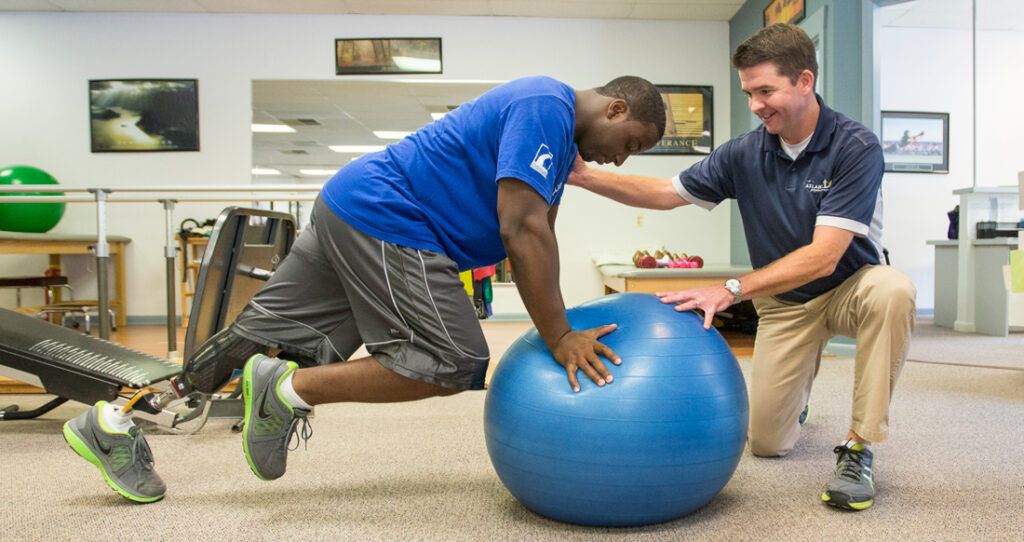Just as a lack of flexibility throughout your musculoskeletal system can limit one’s range of motion, hold an athlete back from performing optimally, and even increase one’s chances of suffering an injury, such limitations in the mind can have a similar affect.
Without a good amount of “psychological flexibility”, as it’s called, researchers say both physical and emotional change can be difficult, even at a time when both are truly necessary in order to lead a happier and more fulfilling life.
This is a barrier many people with pain face on a daily (even hourly) basis.
And often, these psychological barriers – our inability to confidently identify and address the psychological flexibility of patients – leave us, as physical therapists and other
“Greater psychological flexibility is associated with less pain-related anxiety and avoidance, less depression, less physical and psycho-social disability and other measures of patient function,” said Lance M. McCracken, a professional of behavioral medicine in London and a leading researcher in Acceptance and Commitment Therapy (ACT).

Acceptance and Commitment Therapy (ACT)
Acceptance and commitment therapy is a type of cognitive-behavioral therapy that uses mindfulness and the acceptance of life’s difficulties as a way of moving forward, meticulously moving chronic pain sufferers toward behavioral changes and solutions.
It teaches people not to fight the pain, but to be mindful of the challenges it presents – to accept them without fear or anxiety – so they’re better ready to move toward change, action and rebuilding their lives.
ACT encourages people to lean

“We’re always responding to the brain’s predictions of reality,” said Joanne Dahl, PhD, a peer-reviewed ACT trainer and a professor of psychology at Uppsala University in Sweden. Dahl is also an Integrative Pain Science Institute instructor who co-teaches our course, “A Pain Exposure Protocol.”
“People in chronic pain will often talk about pain in a way that maybe is not related to reality, but more in their fears of how it will be,” she added.
ACT, she says, is an active process that strives to redefine this pain in a person’s life be, among other things, achieving greater psychological flexibility.
Psychological flexibility is the ability to be more open, more aware, more focused on values, and more engaged with activities that bring meaning. Another aspect of psychological flexibility pertinent to chronic pain … is called committed action, which involves goal-directed, flexible persistence.
Dr. Tatta’s simple and effective pain assessment tools. Quickly and easily assess pain so you can develop actionable solutions in less time.
ACT + Physical Therapy = Patient Success
The application of acceptance and commitment therapy can no doubt improve the outcome of patients treated for chronic pain at any physical therapy or pain clinic.
Psychologically informed physical therapy using ACT has great potential. A 2019 study in the Journal of Pain found that physical therapists
By adding this psychological component to treatment, forward-thinking private practice physical therapists can set themselves apart by developing a pain management program that’s both innovative and evidence-based.

Of course, ACT is just one component of an approach to chronic pain treatment that supports a more integrative approach to pain management – a method that includes both functional nutrition, mindfulness, psychologically informed pain care, and physical therapy interventions.
By making ACT part of your professional toolbox as a physical therapist treating chronic pain, however, you’ll help your patients achieve greater, longer-lasting success in overcoming chronic pain.
At the Integrative Pain and Science Institute, we’ll show you how to make these services a central part of your practice.
Sign up here to be placed on the waitlist for our course “A Pain Exposure Protocol: Move Patients from Fear and Avoidance to Awareness and Acceptance Using Experiential Exercises, Movement and Values.” This course is taught by chronic pain experts JoAnne Dahl, PhD and Joe Tatta, PT, DPT.



